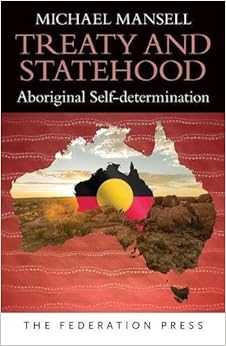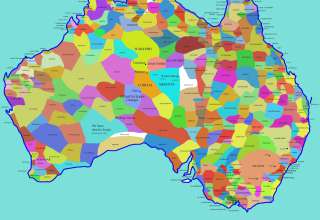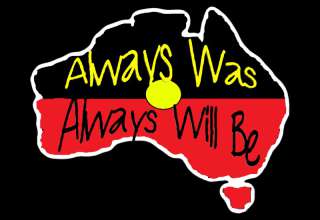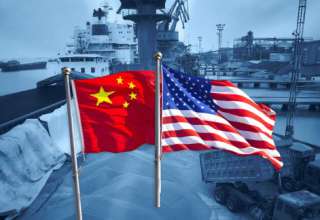by Wallace McKitrick
This is the third instalment of a three-part series that examines the literature of First People’s writers assertions of unceded sovereignty.
Forms of Treaty: the ATSIC campaign for Treaty, and Michael Mansell’s Treaty and Statehood
In 2000 the elected national board of commissioners of the Aboriginal and Torres Strait Islander Commission (ATSIC) launched an education and advocacy campaign, ‘Treaty, let’s get it right!’ premised on proven ‘strong support throughout [our] communities for a treaty.’ A newly formed National Treaty Support Group declared that ‘in the true spirit of self-determination, the right to negotiate a treaty is to be exercised by Aboriginal and Torres Strait Islander peoples in whatever manner they decide through the treaty process.’ The Group began conferring with communities about a viable process. (Source: ATSIC ‘Treaty, let’s get it right!’ brochure, 2000). This commitment by ATSIC no doubt hastened the Howard Government’s vilification of various ATSIC leaders and the complete abolition of ATSIC three years later.
Michael Mansell’s 2016 book Treaty and Statehood
Palawa (Tasmanian) man Michael Mansell was in 1992 a co-founder of the Aboriginal Provisional Government, an imaginative, bold and symbolically potent initiative. See http://apg.org.au A lawyer and community activist, Mansell has continued to be a tireless advocate and theorist of Indigenous sovereignty. His book Treaty and Statehood is a deeply thoughtful ‘roadmap’ providing practical options for Indigenous self-government embedded within formal treaty/ies that are consistent with international law.

He acknowledges that these goals will be achieved by incremental steps. But he notes that the Rudd government’s Apology, constitutional recognition of First Peoples’ occupancy prior to European take-over, and even the increase in Aboriginal and Torres Strait Islander members of parliaments (in the absence of designated seats for Aboriginal representatives directly elected by the Aboriginal constituency), do not provide remedies for slaughter, dispossession and subsequent oppression. Those increments contain nothing of the substance of genuine self-determination.
Only Aboriginal people can resurrect Aboriginal communities to where they should be. That may require control being handed back to Aboriginal people. To the extent that it is possible to restore full authority, it must include taking back legal responsibility from white law, and gradually limiting police involvement. Parliaments must gain Aboriginal consent on issues that directly or indirectly impact on the opportunities for Aboriginal people to fight their way out of dependency and domination. Bureaucratic dealings with Aboriginal communities, including funding priorities, should be required to operate according to expressed Aboriginal wishes. Without real power, little will change. [pp 9-10] … The form of Aboriginal self-determination considered [in the book] neither attacks nor undermines any of the needs of white Australians. On the contrary … the principle of self-determination is consistent with a mutual recognition of the needs of the two peoples. [p12]
(Mansell explains early in the book that he will not try to speak for Torres Strait Islanders, who are in a significantly different situation with different self-determination options; so his book will in general stay with the term ‘Aboriginal’.)
Mansell makes the crucial observation that ‘the people of an invaded country do not lose their sovereign rights: at best, they temporarily lose their ability to exercise their sovereign rights.’ He examines legislative and constitutional opportunities for restoring the exercise of First Peoples’ sovereign rights in the Australia of today, with detail to be clarified in a treaty and, where relevant, special legislation. He points out that while such processes work within the reality of the Australian constitution and the federal structure, they do not entail Aboriginal acceptance of the legitimacy of the settler state or its domination of Aboriginal peoples.
A treaty would signal an agreement between two sovereign entities, immediately establishing a focus on a higher plane…. Governments would need to dignify the treaty negotiating process by treating Aboriginal representatives as equal to government. The treaty content would, accordingly, be at the level of a partnership. For example, empowerment under a treaty might involve an Aboriginal body with legislative powers and guaranteed finances. Or designated seats in parliament or an Aboriginal veto over legislation dealing with certain topics or, if not a veto, a legislated requirement to hold good faith consultations. [p 113]
Drawing on constitutional law in Australia and several other countries, Mansell demonstrates that substantial self-government and exercise of rights, established by treaty, can be achieved within the existing Australian constitution and federal structure (which already divides sovereignty among state entities and the nation entity). He disposes of numerous statements to the contrary by politicians. In chapter 6, he explores the ‘minimum content of a treaty’, ‘what might be in a treaty’, and treaty-making processes.
In chapter 9, Mansell examines the legal and political contours of a potential new First Peoples State, permissible within the existing national constitution, governed by Aboriginal people. Its territory need not be a single place (for example, it could consist of various parcels of what is currently ‘crown land’); its residents need not be solely Aboriginal people; free movement in and out of the State would in normal circumstances be maintained, as with existing States; and ‘all Aboriginal people on the continent, regardless of where they resided, could be a candidate or vote in elections for the new State Assembly.’ [p200] A ‘fair share of the revenue gained from territory and resources that were once indigenous’ (such as 3 to 5 percent of Australian gross domestic product) would give the new State a firm financial basis.
Many features of such a State, he suggests, would be similar to those of an Aboriginal nation created by secession from Australia – a goal much less achievable in terms of Australian legal realities and international law). [p269]
Chapter 10 gives extensive practical detail about ways the First Peoples State could operate. Chapter 11 describes incremental steps of the path to the proposed State.
Treaty and Statehood is an extraordinary work by virtue of its research base, its careful and level-headed exploration of every relevant historical and current aspect of the issues, its unswerving commitment to principle (including the rights of both Aboriginal and non-Aboriginal people), and Mansell’s great warmth of heart. Do read it! It’s published by Federation Press.
Around the globe, Indigenous sovereignty never sleeps
We need only look at our near region to find proof that Indigenous peoples’ sentiment and drive for sovereignty is inspiringly persistent: for example, the achievements of the irrepressible Maori of Aotearoa-New Zealand, the victories of the people of East Timor, and the unflagging struggle of Indigenous West Papuans for independence from brutal colonialism. Further afield, the Saami of Scandinavia, Native American peoples, First Nations of Canada, and numerous Indigenous movements in South America and elsewhere provide further reassurance and morale to the First Peoples of this continent ‘Australia’.
Allies and targets
In the movement to restore First Peoples’ self-determination in this country, ‘natural’ allies are all sections of society who suffer lack of jobs, ill-paid and unsafe jobs, diminishing income, lack of housing and curtailment of basic rights. These sections include (for example) families of all cultural origins who have been excluded from the labour market, often for several generations; people being forced from their homes by increased mortgage rates; family farmers and orchardists who are being squeezed by agribusiness, banks and supermarket chains; guest workers exploited on temporary visas; and asylum seekers denied human and economic rights. Other allies include those sections of the environment/climate action movements who understand the unsustainable nature of capitalist economies and also recognise the crucial role of Aboriginal and Torres Strait Islander knowledge holders.
Subjectively, many people in these sections of society don’t yet accurately see the causes of their oppression. Big business’s parliamentary representatives – Coalition, ALP and populist deceivers – and its media mouthpieces work hard to divert us from seeing these common interests and realising that united mass action can force change. Racism is deliberately cultivated to provide our population with ‘internal enemies’ to blame for our troubles. Every old divide-and-rule tactic is being brought out of the exploiters’ toolbox.
The positive aspect of this is that they feel the pressure, the need, to use these foul tactics because they know the disparity in wealth and opportunity is now glaring to all. The delusory liberal-democratic ‘soothing ointments’ no longer work on a society in acute pain. Experience in protests, along with disillusionment with the easy slogans and promises of politicians, will gradually bring many more people to see that their interests lie in alliance with First Peoples.
These alliances on the grounds of shared interests and seeing the same sources of oppression have nothing to do with the moral posturing of liberals and social-democrats who nonetheless wish to severely limit the scope of Indigenous self-determination. It has little to do with ‘Closing the Gap’-style approaches which employ disempowering service delivery methods, muffle Indigenous political voice, and avoid sovereignty issues. Successful previous movements on all continents have demonstrated that alliances based on practical shared interests and shared campaign targets are a sound basis for genuine solidarity.
Aunty Mary Graham’s advice quoted in Part Two of this article reminds us that in evolving these political and social alliances we need also to ally ourselves with the land and waters, learning from and caring for our place in the biosphere. In the course of shared action, the allied sections of our society will establish deeper mutual respect and come to recognise that practice of Indigenous people’s sovereignty is indispensable for everyone’s wellbeing. Movements for human rights, for health of lands and waters, and for an Australia free of corporate predators can succeed only with progressive Indigenous leadership at their core.








